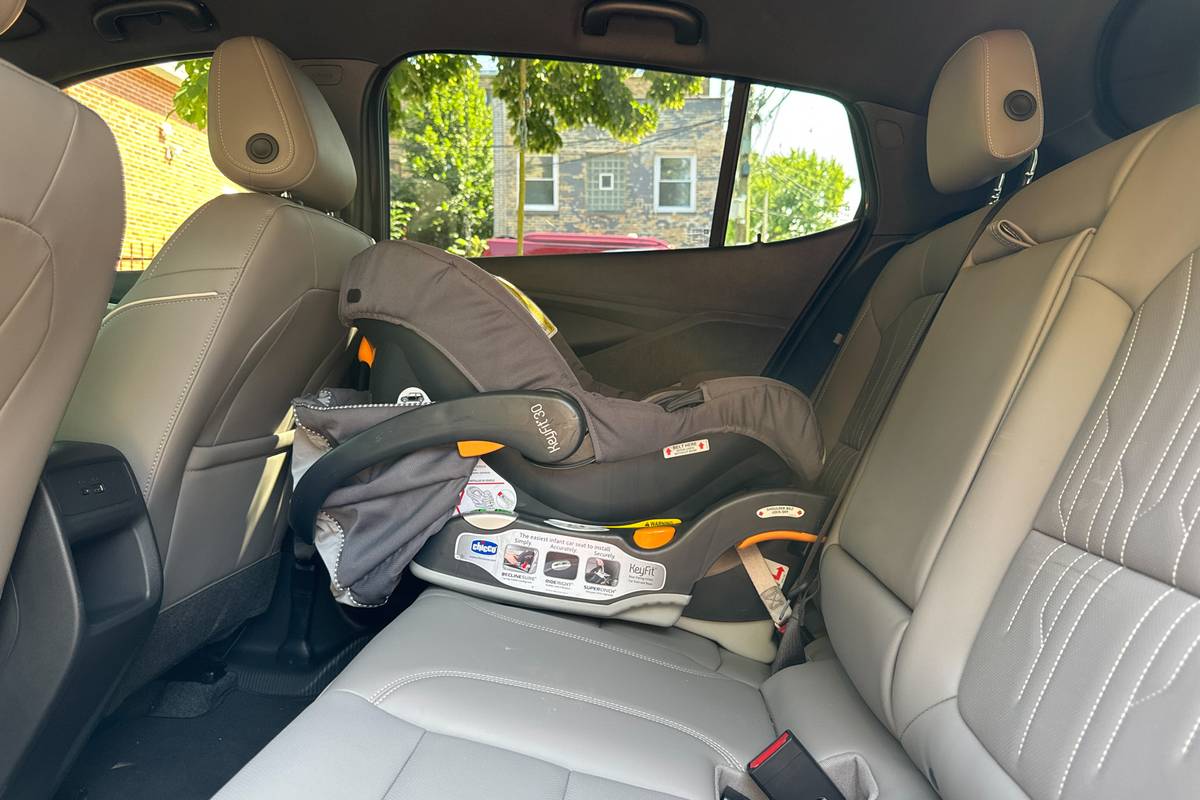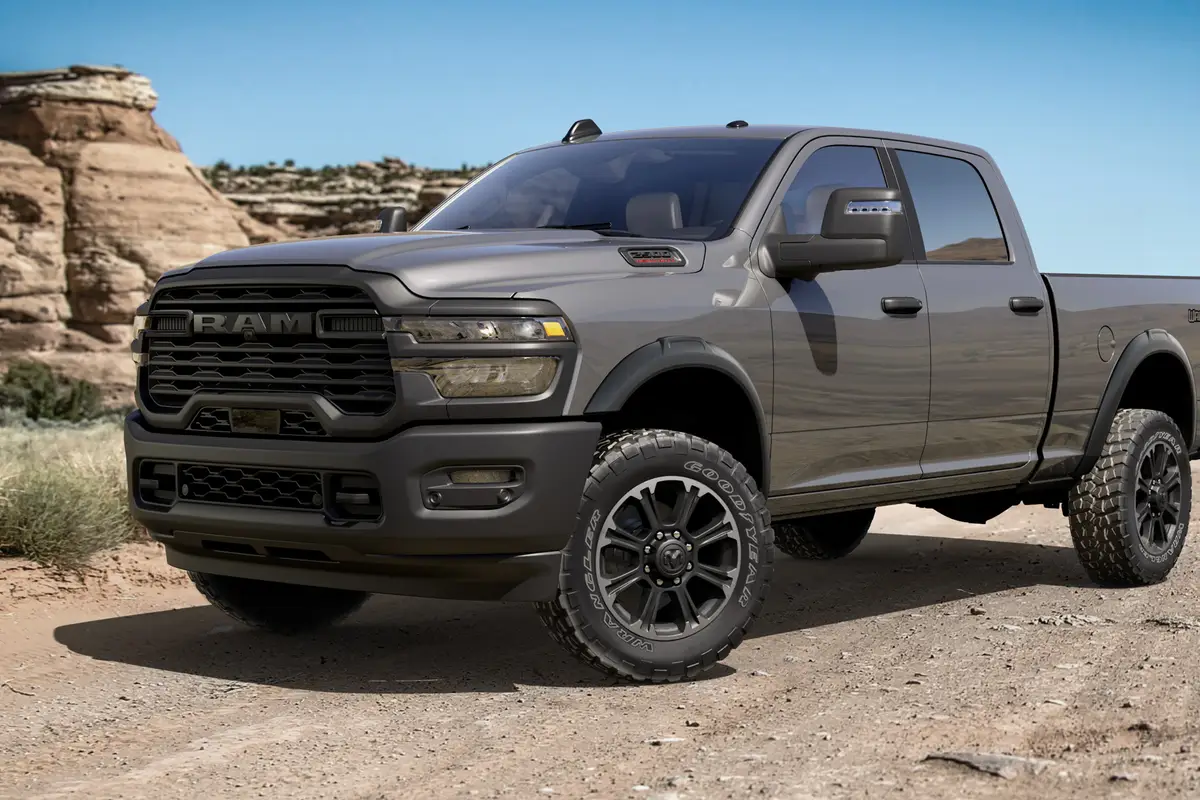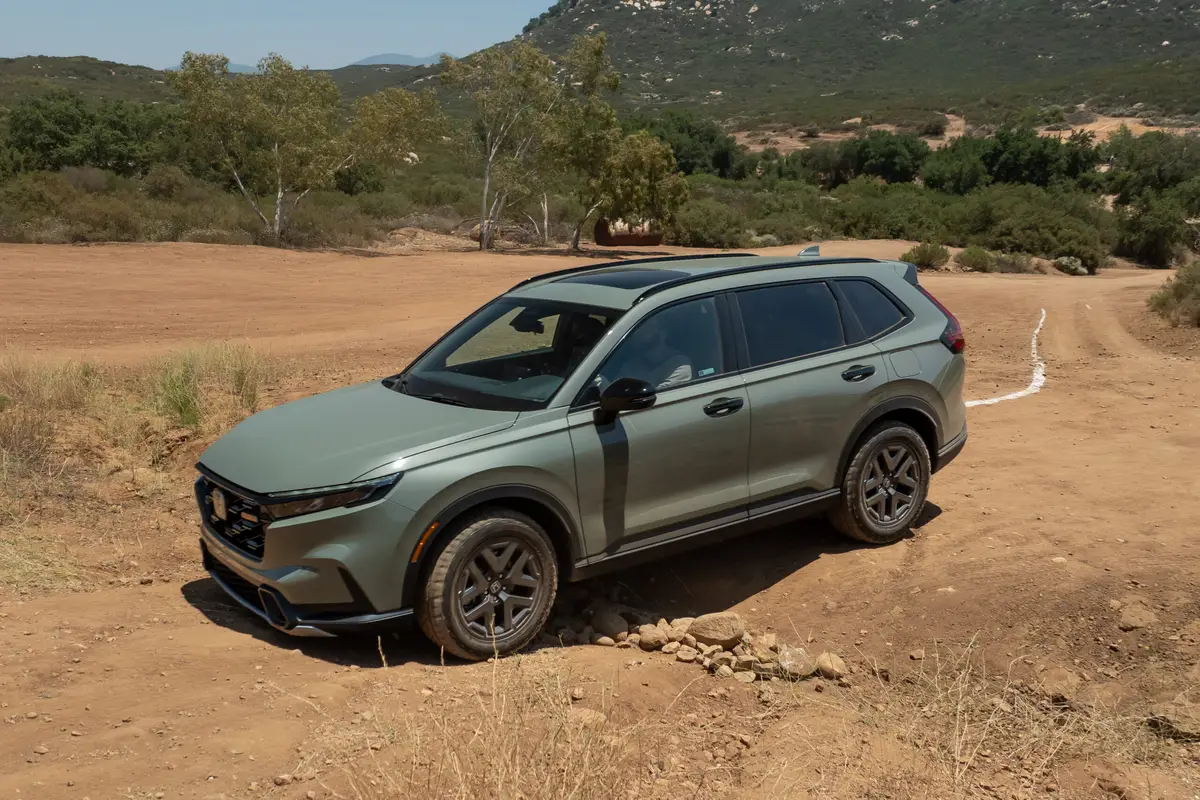chicagotribune.com's view
1996 Ford Taurus
We’ll preface our remarks by admitting that getting behind the wheel of a wagon is like driving a Volvo. The thrill comes at the end of the journey when you are able to bail out.
Wagons are basic transportation, no-frills haulers to cart as much stuff as possible without having to fool with a trunk lid. If you were to pull all of the world’s wagon offerings into a ballroom, you’d have the world’s largest assemblage of dullness. OK, maybe the world’s second-largest, after Geraldo.
So with that in mind, we have to say we loved the 1996 Taurus wagon. The 3-liter, 200-h.p., 24-valve V-6 is lively and spirited. Unless you glance in the rearview mirror to remind yourself you’re driving a wagon and not a sedan, you would easily be fooled.
Lots of people- and package-hauling capability in what is also a fairly attractive package. Yes, we like the all-new aero look for 1996, even the nose job.
Dual air bags are an added bonus. Anti-lock brakes are available, but as a $570 option. Shame on Ford for attempting to keep the base price down by making ABS an extra-cost item.
Those who need more room, but aren’t enamored with mini-vans; those who want space for the pet or the kids, but want something easier to maneuver than a mini-van; and those who like to travel and spend more time seeing the sights than a fuel pump, as you do in a mini van (the Taurus wagon is rated at an exceptional 19 m.p.g. city/27 m.p.g. highway), should check out the wagon.
Base price of the LX we tested is $22,000. Add $1,360 for a preferred equipment package that includes speed control, leather-wrapped steering wheel, carpeted mats, AM/FM stereo with cassette, power door-locks, power driver’s seat, cast aluminum wheels and cargo net; $990 for leather bucket seats (cloth is cooler in summer, warmer in winter and $990 cheaper any season),plus $550 for freight.
One final word directed to Ford Chairman Alex Trotman (who, when unveiling the Taurus/Mercury Sable wagons at this year’s Chicago Auto Show, insisted wagons weren ‘t dead while we argued that they had one fender in the grave): Sorry.
1996 Ford Taurus LX
Ford this fall will bring out a redesigned Ford Taurus and Mercury Sable, the first remake of the sedans in 10 years.
Ford shocked the world with its aerodynamic 1986 Taurus sedan, a vehicle named for a bull that eventually unseated the Honda Accord as the industry’s top selling car in 1992, a title it has held since.
We had the opportunity to put the 1996 Taurus GL/Sable GS base sedans ($18,600/$18,995) and the uplevel Taurus LX/Sable LS models ($20,980/$21,295, add $550 freight on all) through their paces at Ford’s proving grounds here with its smooth/rough road surfaces, sharp hills, sudden dips, rambling straightaways and deer crossings that deliver what they promise.
Taurus/Sable are delightfu l and disappointing-delightful because the new design is clean and crisp yet still a bit daring like the original models. They also deliver a host of what Ford calls “surprise and delight” features, which add to the cars’ emotional appeal.
Yet they are a bit disappointing because Ford needs to get its engine act together by offering a quieter, more energetic base V-6, eliminating road noise filtering into the passenger cabin, developing more user-friendly seats for long-distance comfort and support and making more safety systems standard, even if it means reducing the number of surprise and delight features to keep the base price down.
When you wait 10 years for a redesign, expectations are going to be high, and when you have the top-selling car in the industry for the last three years going on four, those expectations are going to be even higher.
Styling is the most notable change and is sure to be greeted by ooooh’s or uuuughs. Even more aerod ynamic than the ’86 models, the rounded shape has one drawback: it fools the eye into thinking the new cars are smaller than the originals because the hood and deck lid slope sharply while the current model stands tall.
As is always the case, the Ford model gets the nicest styling-a single grille opening with the Ford oval on the hood, a pair of air dams below the grille and a deck lid spoiler. On the Sable, there’s a Mercury logo on the hood, one large air dam and a wider decklid minus spoiler. Base Taurus GL/Sable GS models come with black rocker panels, uplevel Taurus LX/Sable LS models come with body-colored rockers and dual exhausts.
There’s an engine change for 1996. The current 3-liter, 145-horsepower (a 5-h.p. increase),V-6 Vulcan engine is standard on the base models, a new 3-liter, 200-h.p., Duratec, V-6 (the 2.5-liter, 24-valve, V-6 offered in the Ford Contour and Mercury Mystique compacts is a Duratec, too) is standard on Taurus LX/Sable LS. The 3.8-liter, 140-h.p., V-6 no longer is offered.
Duratec is peppy yet quiet and runs so smoothly that Ford boasts you can balance a nickel on the block while idling, which we found to be true with the nickel resting against the raised D-U-R-A-T-E-C letters. A third engine-a 3.4-liter, 235-h.p., V-8-is coming but it will be offered only in the Taurus SHO performance sedan that comes out next spring.
The base Vulcan V-6 needs a bit more energy and a lot more quiet, though Ford pointed out that the Vulcan comes with the current 4-speed automatic. Duratec has a new electronically controlled 4-speed, the same as that used in the new Continental, which affects noise levels and performance.
Duratec is quieter and more lively, especially in the burst from the light. When put to the test on a rather steep hill here, Duratec outclassed Vulcan.
In a Taurus GL with the Vulcan V-6, we reached 55 miles per hour up the incline before the engine came upshort of breath, perhaps in part because the transmission seemed confused as to when or if to shift. We switched to a Taurus LX with the Duratec, and it reached 60 m.p.h. u p the incline while shifting far more smoothly without sputtering for air.
A 3-liter, 192-h.p., V-6 Toyota Camry, which Ford had on hand for comparison, reached 65 m.p.h. and still was accelerating at the summit. Once back on the winding road, however, Camry was prone to wander, lean and sway while the LX kept its composure.
We suspect the Duratec V-6 and offshoots plus new electronic 4-speed automatics will become common at Ford once volume can do justice to the technology.
Ride and handling is noticeably improved, especially the uplevel models with higher spring rates and shock valving for quicker rebound from bumps in the road.
In all models the steering has been revised to be more responsive. Taurus/Sable have been known for being nose heavy and slow to respond to wheel input.
For 1996 the focus is on better center line steering feel and much quicker steering response for better maneuverability.
The Taurus LX is especially nimble on twisting roads where it had a reputation for being a tad temperamental. The LX seems to sit flatter on the road as well so you can snap into and out of corners at speed. Anti-lift, anti-dive suspension geometry helps. Base models however, still tend to float.
Better gripping 16-inch tires will be available, but only on the SHO.
The price you pay for the firmer suspension in an LX or LS is that you’ll feel and hear the tar marks in the road. Ford stiffened the body for 1996 to reduce squeaks and rattles. But since the body was made stiffer, Ford thought it could save money by using less body insulation and sound deadeners. It saved dough, but you’ll notice road noise coming back into the passenger cabin.
The vaunted surprise and delight features include:
– An armrest that folds out of the center of the bench seat with phone or cassette holder (your choice), cupholders with handle slots and coin holder, though it folds out against the ashtray, which makes that inoperable.
– The glove box door, hinged so it opens slowly without dropping onto the passenger’s knees with an owner’s manual holder.
– The doors, which open 24 inches, the estimated distance between cars in a parking lot and stop so you don’t bang against the vehicle next to you.
– All control buttons except lights, cruise control and rear wiper, in a pod in the center of the dash. The buttons are big and set far apart for easier usage.
– A micron air filter that keeps the passenger cabin free of airborne irritants (standard with the Duratec engine in Sable, optional in Taurus with the Duratec).
– Dual air bags standard in all models, but ABS is a $570 option.
– Cabin step-in height lowered by 1 1/2 inches and the opening to the trunk lowered 5 inches for easier loading and unloading.
– Automatic door locks that lock after you put the lever in “drive” and pull away, standard on the LX/LS models, an option on the base models.
– ABS with less pedal chatter since Ford switched to Bosch from Teeves as its supplier.
– A holder on the rear doors welded into the frame, to keep them from riding up/in in an accident, though the holder looks ugly even when body colored.
– All windows with solar glass, to help reduce interior temperatures so the air conditioner doesn’t have to work as hard. Air is standard in all models because windshield glass area is 25 percent larger than in the past.
– The trunk release button, conventiently located in the instrument panel, and the fuel gauge, with an arrow pointing to the side of the filler door opening.
– Rear seat backs that fold so you can handle skis or a ladder through the trunk.
– One key that opens doors/trunk, outside mirrors heated and the radio in the trunk to discourage theft.
Lots of goodies, but still some annoyances: Rear windows open only a few inches; even with a drip rail, the rounded aero roof line fails to prevent rain water from rolling into the cabin if you open a window during/after a shower; seat backs tend to be stiff and a little unforgiving on long-distance travel; anti-lock brakes are an option in a car that makes air conditioning standard; traction control will be offered in the SHO only initially; built-in child safety seats are offered only in wagons; outside mirrors have a small field of vision; taller drivers may experience some glare off the steeply raked windshield.
>> 1996 Ford Taurus LX
Wheelbase: 108.5 inches Length: 197.4 inches Engine: 3-liter, 24-valve, 200-h.p., V-6 Transmission: 4-speed automatic. EPA mileage: 22 m.p.g. city/28 m.p.g. highway (estimated) Base price: $20,980 Price as tested: Prices of options not available. Add $550 for freight. Pluses: Dramatic redesign. Peppier Duratec V-6 replaces old 3.8-liter, V-6. More precise steering with better center line feel and less nose heaviness. Lower step-in and trunk heights. Convenient controls in the radio pod. Long list of “surprise and delight” features, such as a passenger cabin air filter. Dual air bags are standard. Cleaner and less cluttered interior package. Minuses: While new 3-liter, Duratec, 24-valve, V-6 is peppy the old 3-liter, 145-h.p., Vulcan, V-6 available on base model still needs a shot of performance. Design makes car look much smaller than it is. Rear window goes down only partially. Road noise comes back into cabin. Rounded roof allows rain water to drip into cabin. Exterior mirrors too small. Seat backs stiff. ABS a $570 option. >>
Latest news



